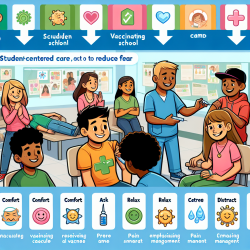Unlock the Secret to Effective Suicide Prevention: What Every Practitioner Must Know!
In the realm of public health, suicide prevention is a complex and multifaceted issue. The recent research article, "Participatory Model Building for Suicide Prevention in Canada," offers valuable insights into how practitioners can enhance their skills and improve outcomes in suicide prevention. This blog will delve into the key findings of the research and explore how practitioners can apply these insights to their work.
The Power of Participatory Model Building
Participatory model building is an innovative approach that involves stakeholders in the development of conceptual models. This method has been employed to address various complex issues, including suicide prevention. The research conducted in Canada involved a workshop with federal public health employees to develop a conceptual model illustrating the interconnections between risk and protective factors related to suicide.
Key Findings from the Research
- Comprehensive Conceptual Model: The workshop resulted in a conceptual model that organizes and communicates the complex interrelationships between factors influencing suicide. This model provides a framework for understanding the upstream factors that can impact suicide prevention efforts.
- Identification of Prevention Levers: Participants identified various prevention levers that operate at different levels, including individual, family, community, and societal. These levers can be used to inform public health strategies and interventions.
- Lessons Learned: The research highlighted several lessons learned from the participatory model building process, including the importance of stakeholder engagement and the need for a flexible approach to model development.
Implications for Practitioners
For practitioners in the field of suicide prevention, the findings from this research offer valuable guidance. Here are some ways practitioners can leverage these insights:
- Adopt a Systems Approach: Utilize the conceptual model as a tool to understand the interconnectedness of risk and protective factors. This systems approach can help identify leverage points for intervention and highlight gaps in current prevention efforts.
- Engage Stakeholders: Consider involving stakeholders, including individuals with lived experience, in the development of prevention strategies. This participatory approach can lead to more effective and sustainable interventions.
- Focus on Upstream Factors: Prioritize upstream factors, such as societal and community influences, in prevention efforts. Addressing these factors can have a broader impact on reducing suicide risk.
Encouraging Further Research
While the research provides a solid foundation, there is still much to learn about suicide prevention. Practitioners are encouraged to engage in further research to refine and expand upon the conceptual model. By doing so, they can contribute to a deeper understanding of the complex factors influencing suicide and improve prevention efforts.
To read the original research paper, please follow this link: Participatory model building for suicide prevention in Canada.










